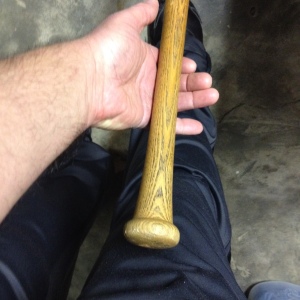I don’t like playing freshman on the varsity level in high school. Never have liked it, probably never will like it. It’s personal preference backed up by years of personal observation. I’ve too often seen a developmental flatline in the athletes who played varsity as freshman through the rest of their high school career.
Very few of these kids are better all-around varsity players as seniors than they were when first stepped onto a varsity field as a freshman. Their growth curve as an athlete always seems to stagnate in comparison to their classmates who didn’t start playing varsity until a year or two later.
Why?
I don’t really know for sure.
Maybe it’s mental. Perhaps the athlete consciously or unconsciously feels they have achieved their destination and don’t need to get any better. The “I HAVE ARRIVED” syndrome.
Maybe it’s physical. The athlete was an early-bloomer whose later-developing peers were able to surpass them.
Most likely it is theses athletes don’t ever learn their Athletic Alphabet.
Huh?
The Athletic Alphabet is the collection of basic things an athlete needs to learn in their sport. Technique, playbook, physical tools, intensity, motivation/drive, execution, experience, plus many other things are the collected in the alphabet.
I am a much better developmental coach than I could ever be as a varsity head coach. My strength was in the development of athletes by making the athletes realize they need to get better every day. When the athlete would achieve their goaI, I would pat them on the back and then turn up the pressure with a new, more loftier, goal.
I tried to get them to understand the importance of a step by step approach to being a competitor AND pounding it into their young, teenage heads this step by step approach never stops. There is always someone out there better than you are. Never be satisfied being the best on your team or in your town.
The alphabet analogy came early in my coaching career. We were coming back from a dismal freshman football performance. I was not a happy camper on the bus. I challenged the players to invest in learning the things they needed to learn to play high school football. Learn their job on every play and learn how to do that job correctly with the techniques we developed through effort every day in practice and drills.
I told them their middle school football experience taught them only the letters A, B, and C. They needed to start learning more letters because what the hell could you spell with only an “A”, a “B”, and a “C”?
Cab. That’s it…one word! Cab.
You can’t get very far in life knowing only the word, “cab”, can you?
Even if that one word or that one thing you can currently do is pretty damn good, it is not nearly good enough. If you learn how to use all 26 letters in the alphabet, though, you can make any word. Armed with the whole A thru Z in your arsenal, you can create eloquent sentences and communicate effectively with others.
As an athlete, you need to learn, develop and master the basics of a sport before you can be highly competitive at that sport. In sports, you need the whole Athletic Alphabet to fill your potential.
Don’t be satisfied.
Don’t settle for someone just giving you a spot on the hill. Strive (and do the requisite work) to be KING OF THE HILL.
There is no such thing as “good enough”.
The ultimate competition is with yourself.
There is only you and your potential.
Never stop getting better.











